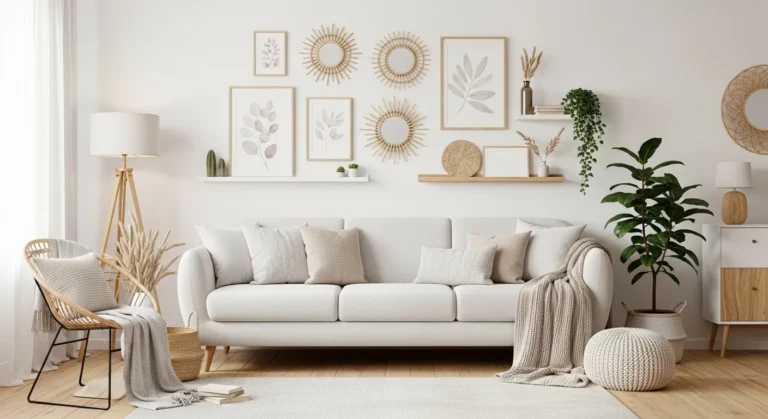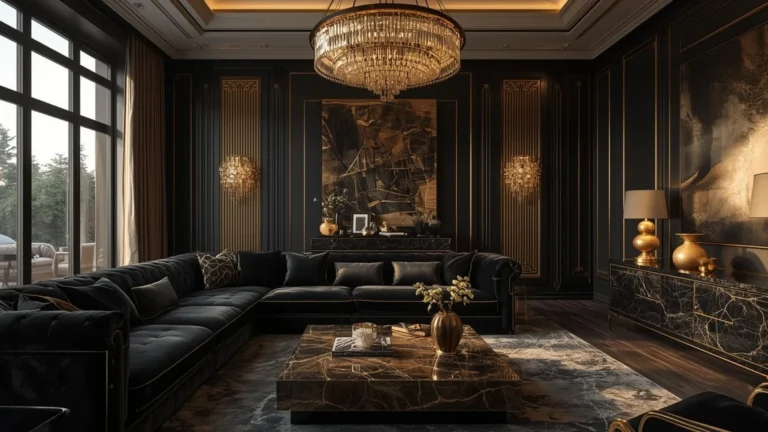How to Instantly Make Your Living Room Look Complete With 25 Simple Tricks

Empty space in a living room doesn’t have to feel like wasted space. Instead, it’s an opportunity to enhance flow, highlight focal points, and introduce elements that make your home feel more inviting and stylish. Properly filling or utilizing empty areas creates balance, prevents awkward gaps, and elevates the room’s overall aesthetic.
Experts recommend analyzing your living room layout first, considering traffic flow, natural lighting, and focal points like fireplaces, windows, or entertainment units. From there, you can select furniture, décor, and functional accessories that complement your style while optimizing space. Whether you favor modern minimalism, cozy traditional vibes, or eclectic charm, the key is to create harmony and purpose with every piece you add.
Below are 25 creative ways to fill empty space in your living room with style, functionality, and expert-approved design tips.
1. Add a Statement Chair

A single statement chair in an empty corner can instantly transform the space. Choose a chair with bold colors, unique shapes, or luxurious textures to draw the eye and add personality.
Experts suggest pairing the chair with a small side table or floor lamp to create a cozy reading nook. This approach fills the space while maintaining functionality, style, and balance within the room.
2. Use a Large Floor Plant

Tall indoor plants like fiddle leaf figs, monstera, or palms can fill vertical space and bring life into an otherwise empty corner. Plants also improve air quality and add natural texture.
Professional decorators recommend placing the plant in a decorative pot that complements your living room palette. Layering with smaller plants or accessories nearby creates depth, visual interest, and a professional, organic feel.
3. Introduce a Console Table
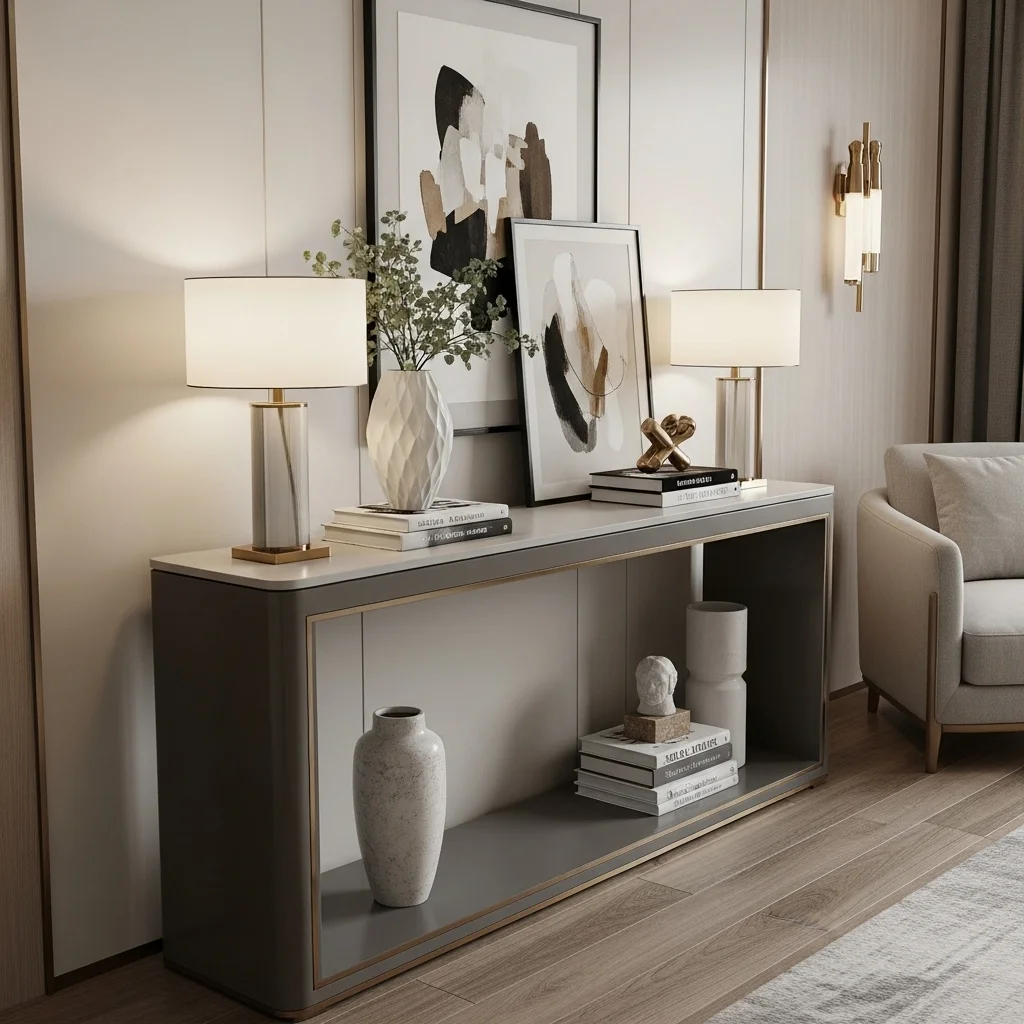
Place a console table along an empty wall to add both storage and style. Decorate it with books, vases, candles, or artwork to make it a design feature.
Experts advise keeping the tabletop uncluttered while layering textures and heights for visual balance. This solution fills empty space while maintaining elegance, functionality, and harmony in the living room.
4. Create a Reading Nook

Use empty space to design a small reading nook with a comfy chair, pouf, soft throw, and a floor lamp. It becomes a functional and inviting corner for relaxation.
Professional decorators suggest layering cushions, blankets, and small décor pieces to create depth and warmth. This approach ensures the empty area feels purposeful, stylish, and cozy.
5. Add a Rug and Low Table

Place an area rug with a low table to define the empty space, creating a subtle seating or display zone. Rugs anchor furniture and add texture to large open areas.
Experts recommend choosing a rug that complements existing décor colors and textures, ensuring a cohesive look. A low table with decorative items or books further fills the space stylishly and functionally.
6. Place a Sculptural Piece
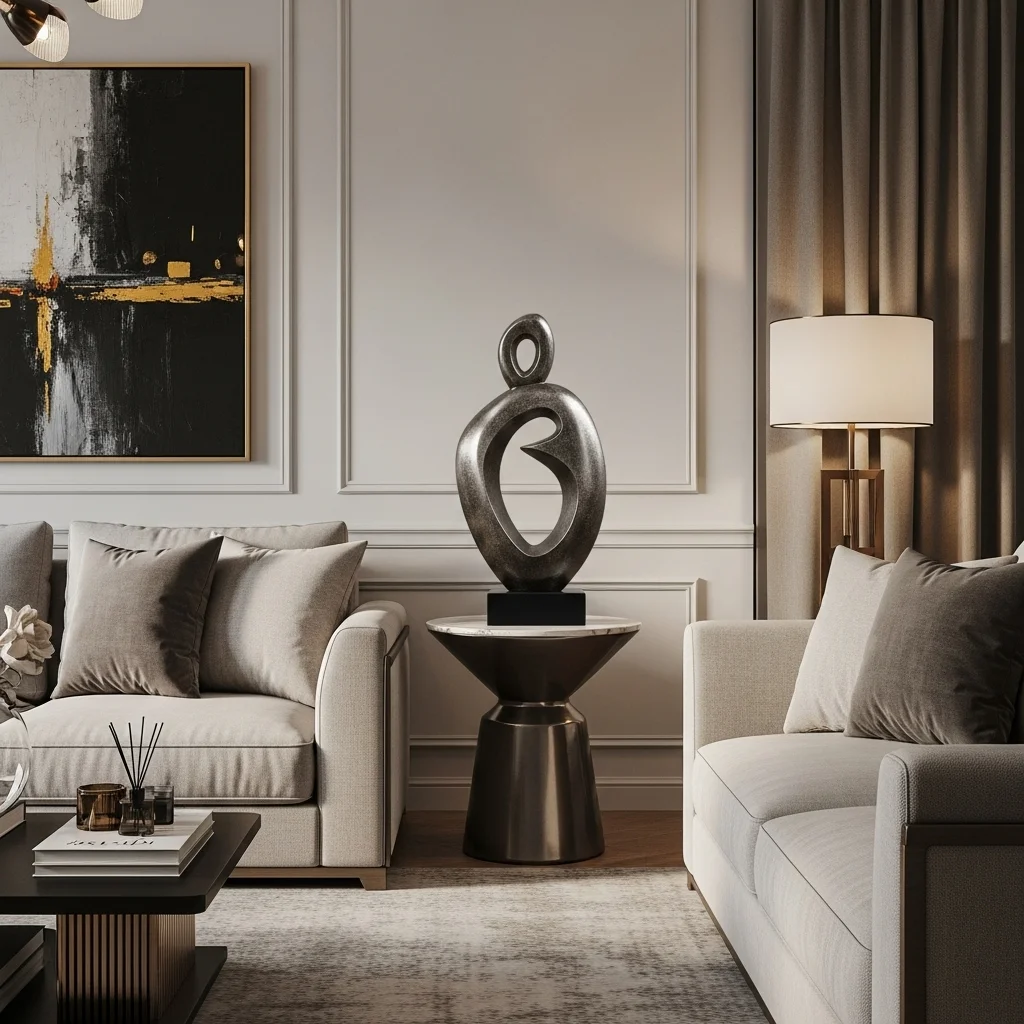
Use a sculpture, art piece, or decorative object to create a focal point in an empty corner. Sculptures add visual interest, texture, and a sense of sophistication.
Experts recommend selecting pieces that match your living room style, whether modern, organic, or eclectic. Positioning a sculpture near lighting or a neutral backdrop enhances its impact, making the empty space feel intentional and curated.
7. Install Floating Shelves

Floating shelves on empty walls can display books, art, or plants while utilizing vertical space. Shelves help balance proportions and create a layered, professional look.
Professional decorators suggest arranging items in odd numbers, mixing textures, and incorporating small décor accents. This approach ensures the empty wall becomes a functional, stylish, and visually appealing feature of your living room.
8. Add a Pouf or Ottoman

A pouf or ottoman fills empty floor space while providing additional seating or a surface for trays and décor. They’re versatile, lightweight, and easy to move around as needed.
Experts advise choosing textured or patterned pieces that complement your room palette. Layering poufs with rugs or nearby furniture ensures the empty area feels cohesive, functional, and stylishly integrated.
9. Create a Mini Bar or Coffee Station
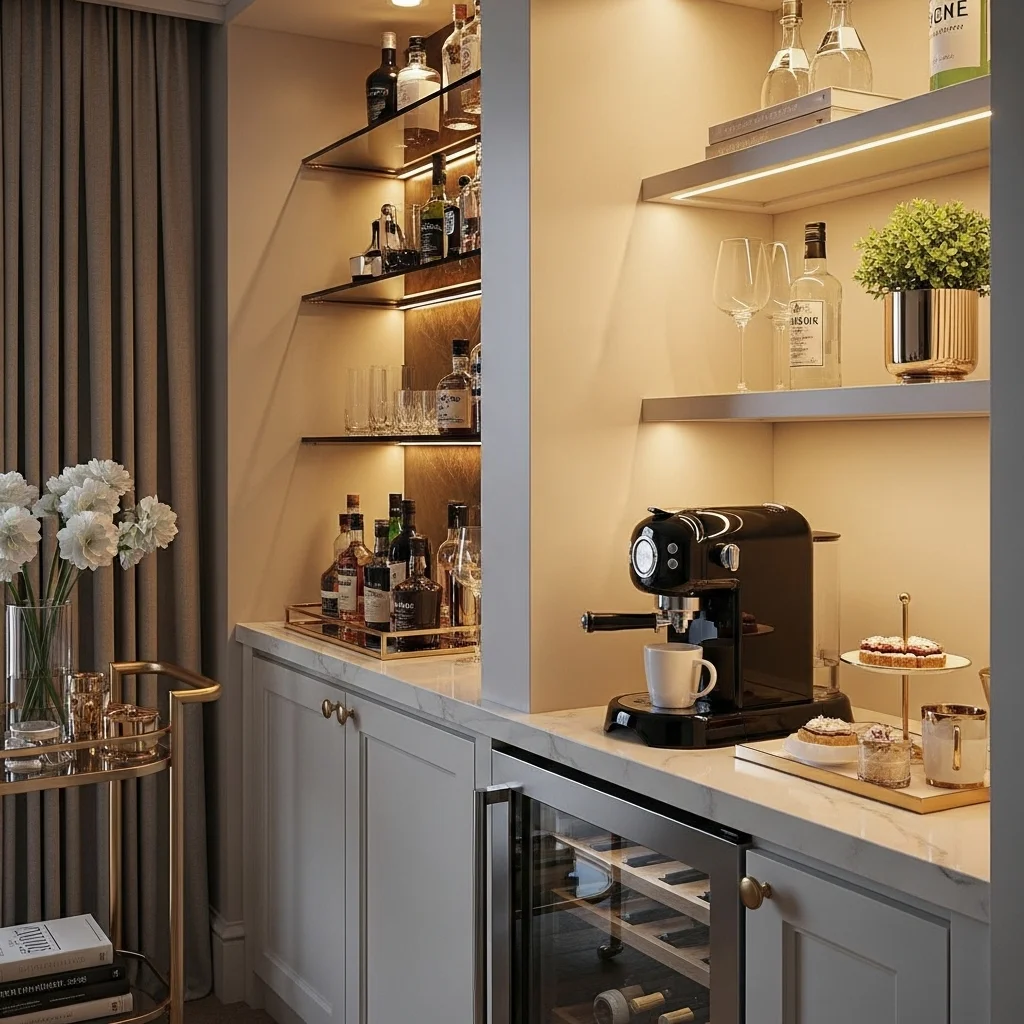
Transform unused corners into a small bar cart or coffee station. This not only fills space but adds a functional and interactive element to your living room.
Professional decorators recommend styling the station with trays, glasses, plants, and decorative items for balance. This approach maximizes empty space while creating a polished, practical, and visually appealing corner.
10. Use a Room Divider or Screen

A stylish room divider or folding screen can break up empty areas, add privacy, or create a defined zone. Screens also introduce texture, color, and pattern.
Experts suggest selecting dividers made from wood, metal, or woven materials to complement your décor style. Pairing with plants or lighting enhances depth and visual interest, transforming empty space into a purposeful, stylish feature.
11. Incorporate a Tall Bookshelf
A tall bookshelf can fill vertical space while providing storage and display opportunities. It adds both functionality and style, giving the room a curated, lived-in feel.
Experts recommend styling shelves with a mix of books, decorative objects, plants, and art pieces. Alternating heights and textures creates depth, ensuring the bookshelf becomes a professional, visually engaging feature in the living room.
12. Place a Sideboard or Cabinet
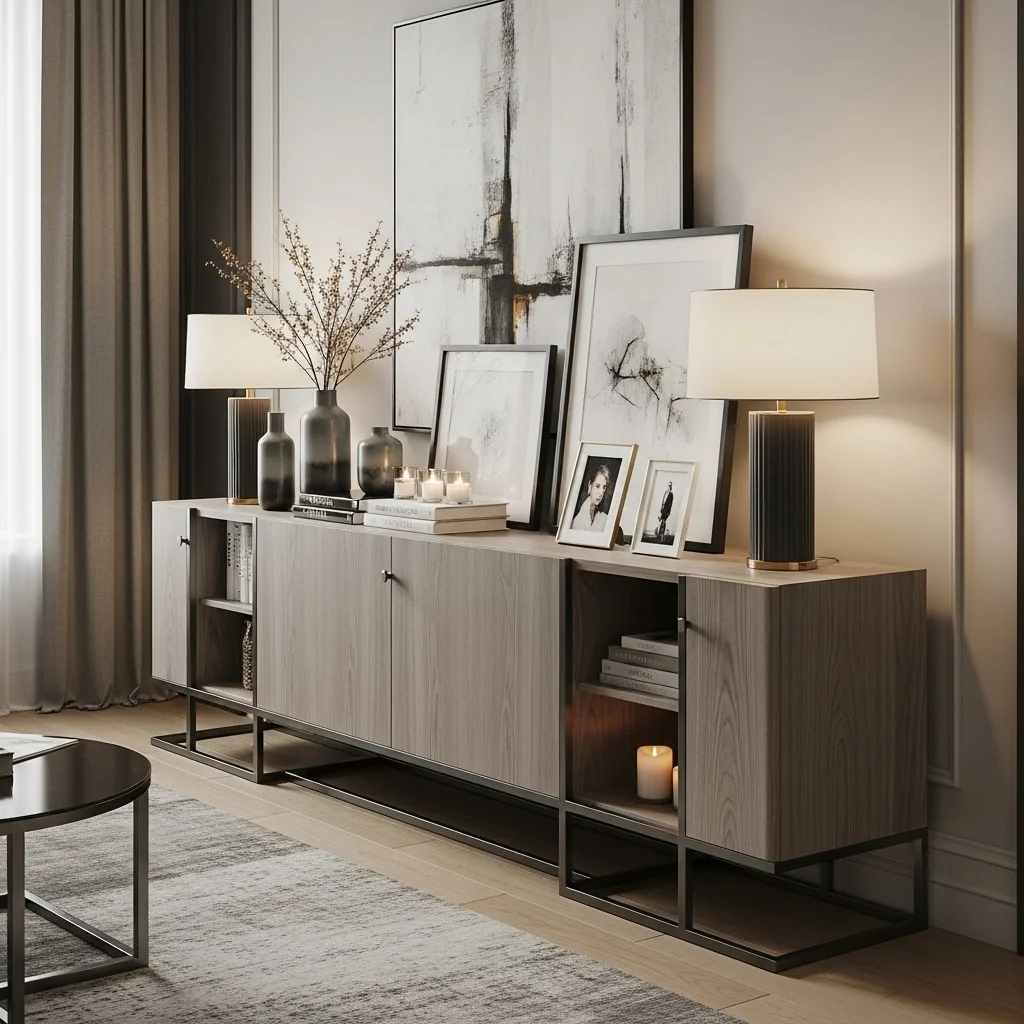
A sideboard or cabinet along an empty wall adds storage and decorative potential. It can hold items like tableware, electronics, or seasonal décor while filling unused space elegantly.
Professional decorators suggest accessorizing the top with vases, trays, artwork, or lamps. This approach balances utility with style, turning empty space into a polished and purposeful area.
13. Add a Floor Mirror
A large floor mirror can instantly fill empty wall or corner space while reflecting light and making the room feel larger. Mirrors also add elegance and a sense of depth.
Experts recommend choosing a mirror with an interesting frame—wood, metal, or woven materials—to complement your décor. Positioning it near natural light sources enhances brightness, creating a functional and stylish focal point.
14. Create a Music or Hobby Corner

Transform empty space into a mini music or hobby area with a piano, guitar stand, or crafting station. It introduces personality and function into an underutilized corner.
Professional decorators advise pairing the space with a small chair, soft lighting, and storage solutions to maintain organization. This ensures the corner feels intentional, inviting, and visually integrated with the rest of the living room.
15. Add Layered Lighting Fixtures
Use floor lamps, table lamps, or pendant lights to illuminate empty areas and create ambiance. Layered lighting draws attention to corners while adding warmth and sophistication.
Experts recommend mixing light sources with natural materials, plants, or furniture pieces to maintain cohesion. Strategically placed lighting transforms empty space into a cozy, functional, and professionally styled feature.
16. Introduce a Corner Desk
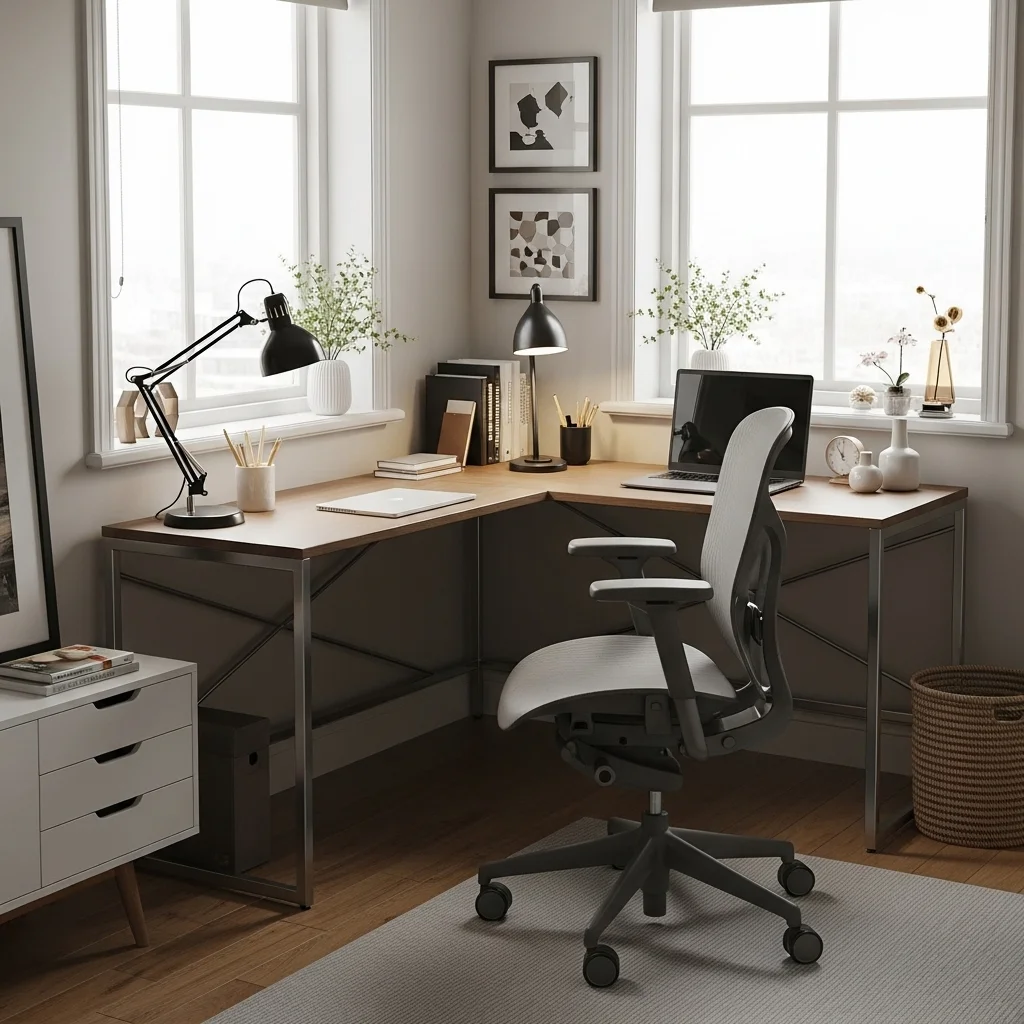
A small corner desk can turn an empty area into a functional workspace. It’s perfect for laptops, writing, or a decorative display while filling the unused space effectively.
Experts recommend pairing the desk with a stylish chair, minimal décor, and task lighting. This approach ensures the corner feels purposeful, professional, and seamlessly integrated into the living room’s overall aesthetic.
17. Add a Decorative Ladder
Decorative ladders are versatile for displaying throws, blankets, or even hanging string lights. They add vertical interest and texture while occupying previously empty wall space.
Professional decorators suggest choosing ladders in natural wood or metal finishes to complement your décor. Layering textiles and minimal décor accents ensures the ladder transforms the empty area into a stylish, functional feature.
18. Incorporate a Bench
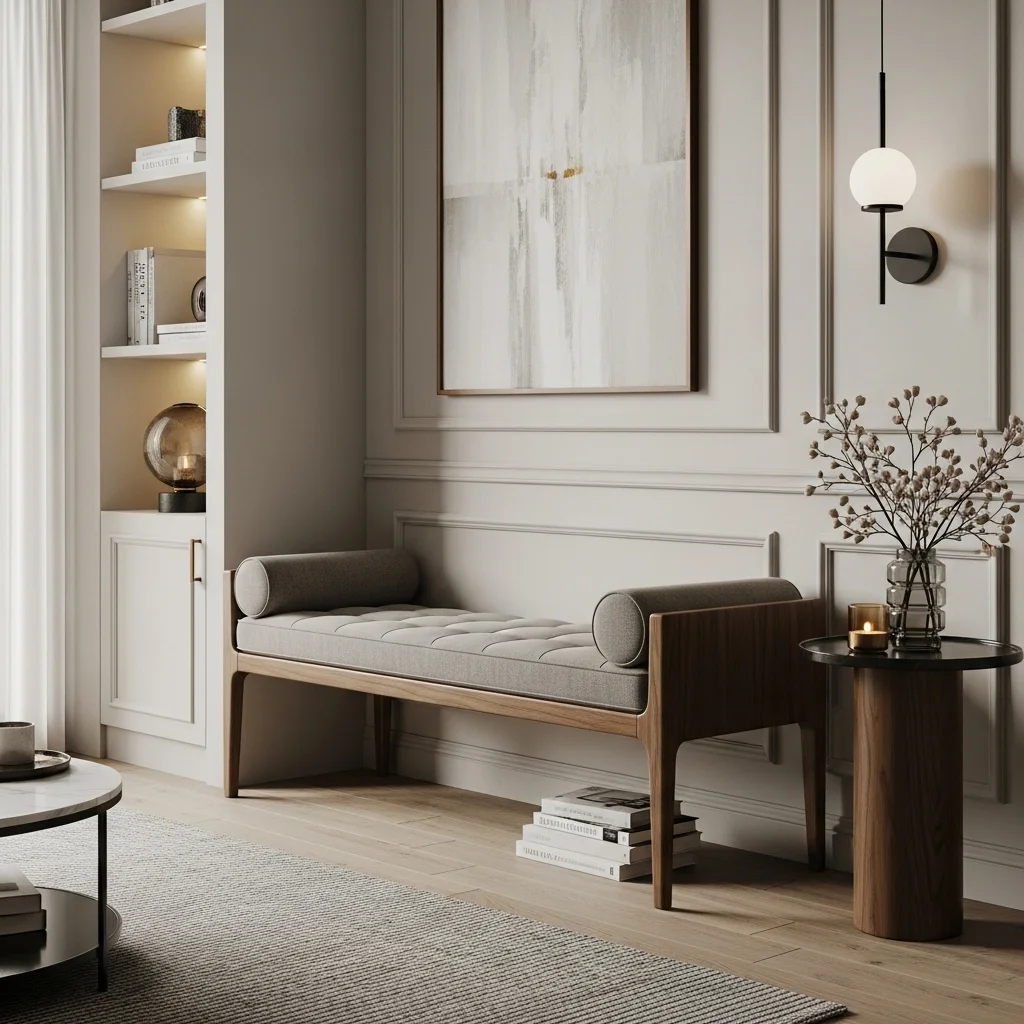
A stylish bench along an empty wall or under a window can serve as seating or a decorative surface. Benches add warmth, texture, and visual balance to underutilized areas.
Experts advise selecting benches with cushioned seats, natural materials, or storage options. Combining with pillows, throws, or small plants creates a polished, cozy, and purposeful space in the living room.
19. Display Art on the Floor
Leaning large framed artwork or mirrors against a wall can fill empty floor space while maintaining a relaxed, modern look. This technique adds visual interest without overwhelming the room.
Professional decorators recommend pairing the artwork with minimal furniture and accent lighting. Layering textures and colors creates a sophisticated, curated, and visually engaging living room corner.
20. Use Decorative Screens or Panels
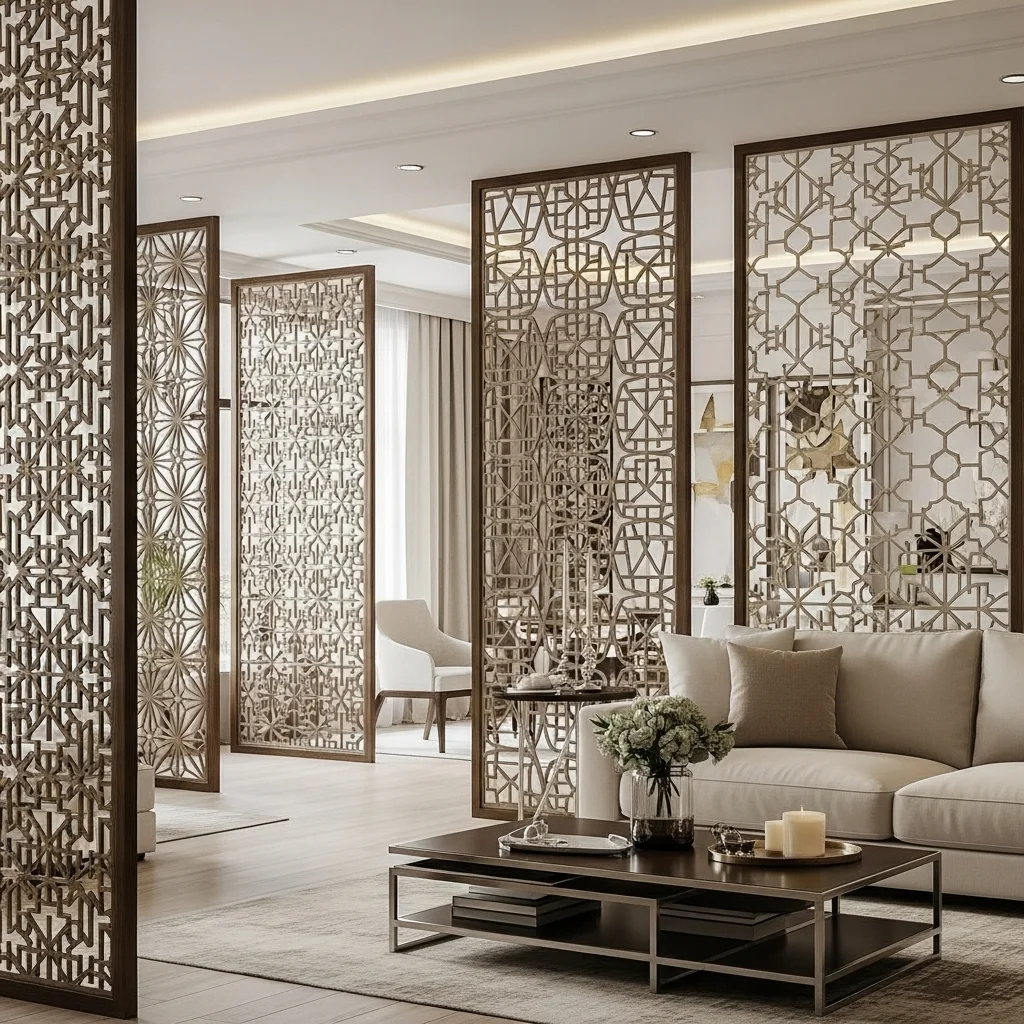
Decorative folding screens or panels can fill empty corners, create a sense of separation, or introduce pattern and texture. They serve both functional and aesthetic purposes.
Experts suggest selecting materials like wood, metal, or woven fibers that match your style. Pairing screens with plants or lighting enhances depth and creates a professional, stylish, and inviting living room feature.
21. Add a Cozy Reading Corner
Transform an empty corner into a reading nook with a comfortable chair, side table, floor lamp, and soft throw. This creates a functional, inviting, and visually appealing space.
Experts recommend layering pillows, blankets, and small décor accents to add texture and warmth. By thoughtfully styling the corner, it becomes a professional, purposeful, and cozy addition to the living room.
22. Place a Round Coffee Table

A round coffee table can occupy open floor space while encouraging conversation and flow. It also softens sharp lines and anchors seating arrangements.
Professional decorators suggest styling the table with trays, books, candles, or small plants. This balances functionality with aesthetics, making the previously empty area feel curated and inviting.
23. Introduce a Floor Pouf Cluster
Cluster 2–3 poufs or ottomans in a corner to create additional seating or a playful lounge area. Poufs are flexible and can be moved as needed for functionality.
Experts recommend selecting poufs in complementary textures and colors to your décor. Layering them with a rug or small side table ensures the space feels cohesive, stylish, and professionally designed.
24. Add a Tall Accent Lamp
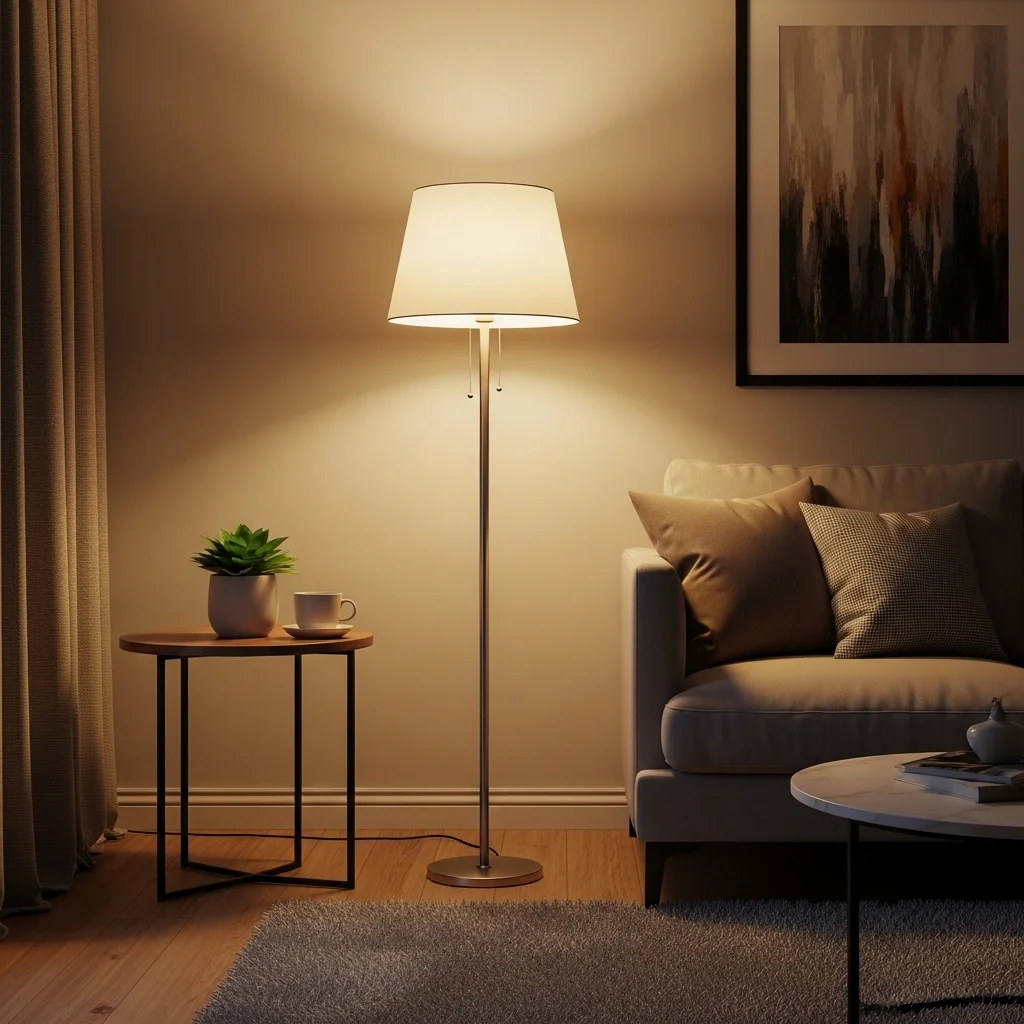
A tall, sculptural floor lamp fills vertical empty space while providing ambient lighting. Lamps add warmth, elegance, and a decorative element.
Professional decorators advise pairing the lamp with nearby plants, chairs, or small tables for visual balance. This transforms a vacant corner into a polished, functional, and aesthetically pleasing area.
25. Use a Decorative Tray on an Empty Surface
Even a small console, shelf, or coffee table can feel empty. Use a decorative tray to organize candles, vases, or books, creating a curated display.
Experts suggest layering items of varying heights, textures, and colors for depth and interest. This simple addition fills space thoughtfully, creating a professional, inviting, and stylish living room feature.
Final Thoughts
Empty spaces in a living room don’t have to feel awkward or wasted. With thoughtful design choices, every corner and wall can become functional, stylish, and visually appealing. By incorporating elements like statement chairs, plants, rugs, lighting, and decorative accents, you can transform empty areas into cozy reading nooks, focal points, or practical zones that enhance the overall flow of the room.
Experts emphasize balancing functionality with aesthetics. Using vertical space with shelves, tall lamps, or artwork, layering textures with textiles, and adding personality through décor ensures that each empty area feels intentional and curated. These small yet impactful adjustments turn unused space into a professional, inviting, and harmonious living environment.
Ultimately, these 25 ideas provide inspiration to fill empty spaces thoughtfully, making your living room not only look complete but feel warm, welcoming, and perfectly designed for daily living. Whether your style is modern, eclectic, or cozy traditional, these tips ensure every corner serves a purpose and elevates your space.


